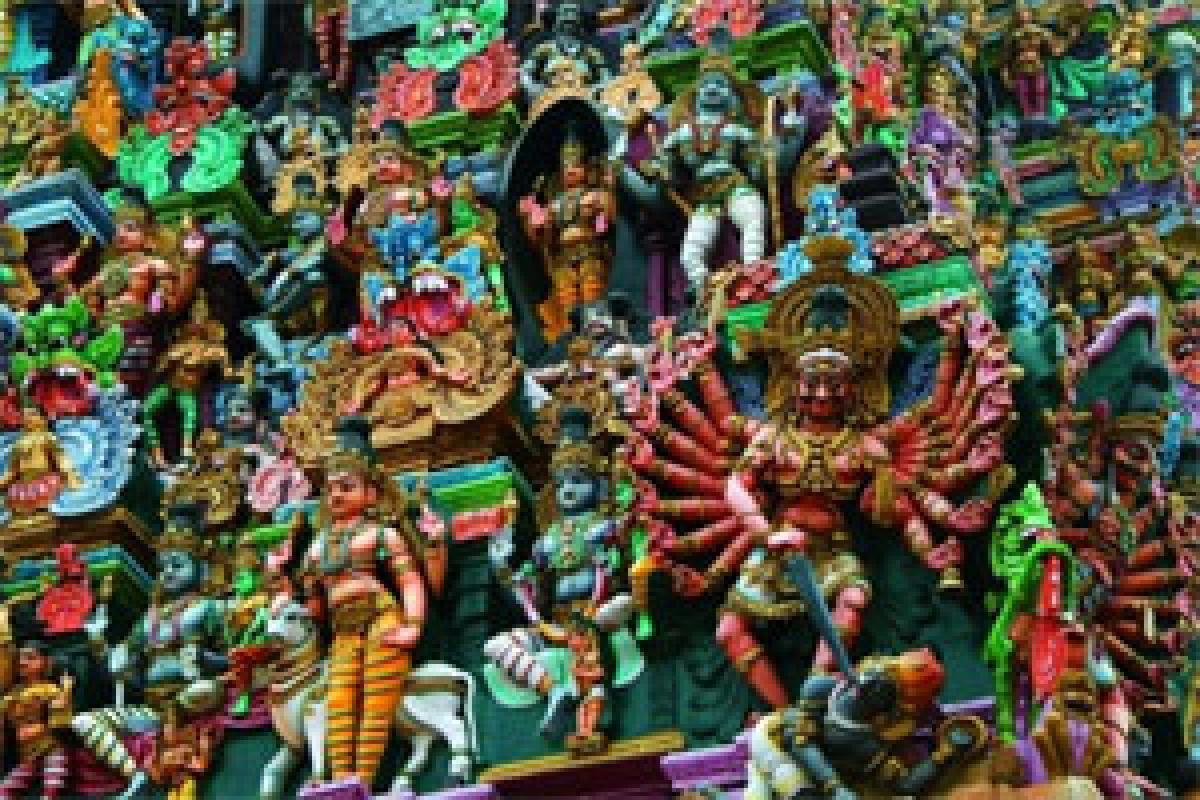Live
- Five-Year-Old Boy Dies After 55-Hour Rescue from Borewell in Rajasthan's Dausa
- Chaos in Parliament over Congress-George Soros link claims, BJP MP poses questions
- Bus Driver Arrested After Deadly Accident in Mumbai’s Kurla; 42 Injured
- Community lunch, a ritual to prevent drought in Adoni
- Rs 36.07 crore tribal products sold through TRIFED in FY24: Govt
- PM Modi to lay foundation stone for Ken-Betwa river linking project on Dec 25: MP CM
- 70 farmers trained as drone pilots in Anantapur dist
- AP Pensions: 500 Ineligible People Receive Pensions for Every 10,000
- South Korea's ruling party chief voices support for President Yoon's impeachment
- Defeat in Tirhut bypolls doesn't signify discontent among teachers: Bihar Education Minister
Just In

An ancient temple, believed to be built by Palahasteeswara, the grandfather of demon king Ravana, is fast losing its glory, thanks to the lethargy of the authorities concerned. Hundreds of devotees, who throng the temple during special occasions, say the temple needs urgent attention of the officials.
Jagtial: An ancient temple, believed to be built by Palahasteeswara, the grandfather of demon king Ravana, is fast losing its glory, thanks to the lethargy of the authorities concerned. Hundreds of devotees, who throng the temple during special occasions, say the temple needs urgent attention of the officials.
The Palahasteeswara temple at Polasa, 10 km away from here, has historical significance and people come to the Siva Temple to get their wishes fulfilled. The temple is nestled amidst sylvan surroundings.
According to the legend, Polasa was ruled by Medaraju-I during 1080 and 1110 when the village was known as Polavasa. The ruler was also known as Maha Mandaleswara. The Polavasa kingdom was a part of the Kalyani Chalukyan kingdom as Medaraju-I was feudatory of the Kalyani Chalukya rulers.
In the Polavasa kingdom, the Palahasteeswara temple was at its glorious best with the regular performance of various rituals at the temple. According to rock edicts discovered here, Narsampeta formed the boundary to the Polavasa kingdom in the east and the Kakatiya empire on the south.
Similarly, Jagtial has historical significance. Medaraju-I’s son Jaggaraju, who ruled from 1110-1117, founded some villages as a token of his victory over enemies in 21 wars. The present day Jagtial was founded then albeit with a different name, Jagadevalayam. Over a period of time, the village became Jagtial.
However, the Palahasteeswara temple did not undergo any transformation. The Shiva Lingam at the temple appears to be lustrous, unique quality of the deity at the temple. The devotees throng the temple feeling overwhelmed at the peace of mind they experience after having a darshan of the deity.
Devotees come in large number to perform Rahu-Ketu puja to get their wishes fulfilled. Earlier, several ancient idols were discovered on the temple premises. Another surprising element the temple has is a king cobra occasionally visiting the temple and coiling around the Shiva Linga only to disappear later.
The snake was a visitor to the temple since ancient times dating back to the period of ancestors of the current priests at the temple. The locals said the temple was not developed the way it should. They want to celebrate Shivrathri on a grand scale so that the people will realise the significance of the temple.
A devotee, Sivakumar, said he was here in connection with performing the Rahu-Ketu puja to have children. He said the temple atmosphere had a calming effect on mind. He said he found it beneficial to have the puja done. The Shiva Linga at the temple appears very bright, compared to other Shiva Lingams.
Temple priest Sarma said many devotees visiting the temple performed the Rahu-Ketu puja from time immemorial. The seven goddess idols, which we find in the sanctum-sanctorum of the temple, are something unique to the temple.
Temple Executive Officer Danayya said the temple was said to be built by Palahasteeswara, the grandfather of demon king Ravana. Many researchers are studying on the rock edict in the temple. Noted historians are studying the historical significance of the rock edict.
By Ch Gopalakrishna

© 2024 Hyderabad Media House Limited/The Hans India. All rights reserved. Powered by hocalwire.com







